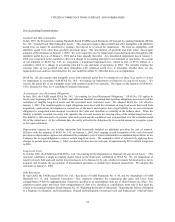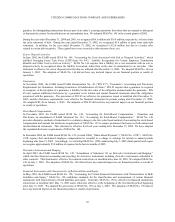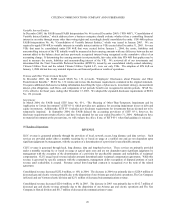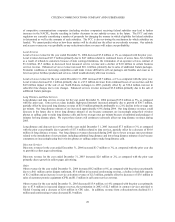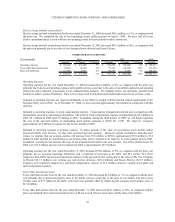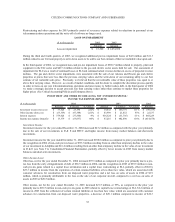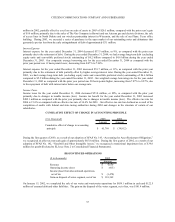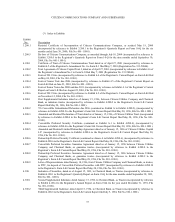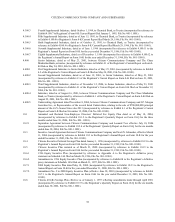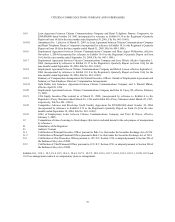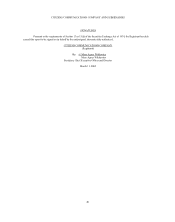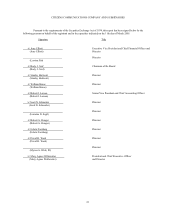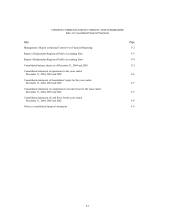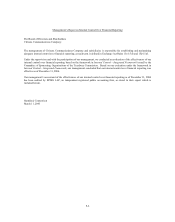Frontier Communications 2004 Annual Report Download - page 36
Download and view the complete annual report
Please find page 36 of the 2004 Frontier Communications annual report below. You can navigate through the pages in the report by either clicking on the pages listed below, or by using the keyword search tool below to find specific information within the annual report.
CITIZENS COMMUNICATIONS COMPANY AND SUBSIDIARIES
34
Item 7A. Quantitative and Qualitative Disclosures about Market Risk
Disclosure of primary market risks and how they are managed
We are exposed to market risk in the normal course of our business operations due to ongoing investing and funding
activities, including those associated with our pension assets. Market risk refers to the potential change in fair value of a
financial instrument as a result of fluctuations in interest rates and equity and commodity prices. We do not hold or issue
derivative instruments, derivative commodity instruments or other financial instruments for trading purposes. As a result, we
do not undertake any specific actions to cover our exposure to market risks and we are not party to any market risk
management agreements other than in the normal course of business or to hedge long-term interest rate risk. Our primary
market risk exposure is interest rate risk as follows:
Interest Rate Exposure
Our exposure to market risk for changes in interest rates relates primarily to the interest-bearing portion of our investment
portfolio and interest on our long term debt and capital lease obligations. The long term debt and capital lease obligations
include various instruments with various maturities and weighted average interest rates.
Our objectives in managing our interest rate risk are to limit the impact of interest rate changes on earnings and cash flows
and to lower our overall borrowing costs. To achieve these objectives, a majority of our borrowings have fixed interest rates.
Consequently, we have limited material future earnings or cash flow exposures from changes in interest rates on our long-
term debt and capital lease obligations. A hypothetical 10% adverse change in interest rates would increase the amount that
we pay on our variable obligations and could result in fluctuations in the fair value of our fixed rate obligations. Based upon
our overall interest rate exposure at December 31, 2004, a near-term change in interest rates would not materially affect our
consolidated financial position, results of operations or cash flows.
In order to manage our interest rate risk exposure, we have entered into interest rate swap agreements. Under the terms of the
agreements, we make semi-annual, floating interest rate interest payments based on six month LIBOR and receive a fixed rate
on the notional amount. For the year ended December 31, 2004, the interest savings resulting from these interest rate swaps
totaled approximately $9.4 million.
Sensitivity analysis of interest rate exposure
At December 31, 2004, the fair value of our long-term debt and capital lease obligations was estimated to be approximately
$4.6 billion, based on our overall weighted average borrowing rate of 7.83% and our overall weighted maturity of 13 years.
There has been no material change in the weighted average maturity since December 31, 2003.
The overall weighted average interest rate decreased in 2004 by approximately 26 basis points. A hypothetical increase of 78
basis points in our weighted average interest rate (10% of our overall weighted average borrowing rate) would result in an
approximate $218.4 million decrease in the fair value of our fixed rate obligations.
Equity Price Exposure
Our exposure to market risks for changes in equity prices as of December 31, 2004 is limited to our investment in Adelphia,
and our pension assets of $761.2 million.
As of December 31, 2004 and December 31, 2003, we owned 3,059,000 shares of Adelphia common stock. The stock price
of Adelphia was $0.39 and $0.55 at December 31, 2004 and December 31, 2003, respectively.
On August 13, 2004, we sold our entire 1,333,500 shares of D & E for approximately $13.3 million in cash.
On September 3, 2004, we sold our entire holdings of 2,605,908 common share equivalents in HTCC for approximately $13.2
million in cash.
Sensitivity analysis of equity price exposure
At December 31, 2004, the fair value of the equity portion of our investment portfolio was estimated to be $1.2 million. A
hypothetical 10% decrease in quoted market prices would result in an approximate $120,000 decrease in the fair value of the
equity portion of our investment portfolio.


